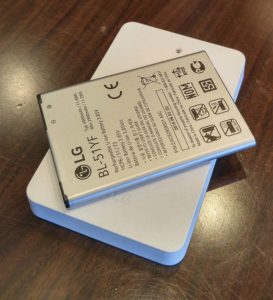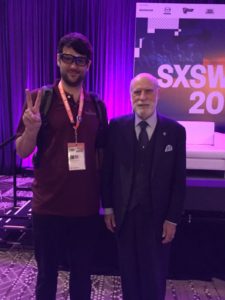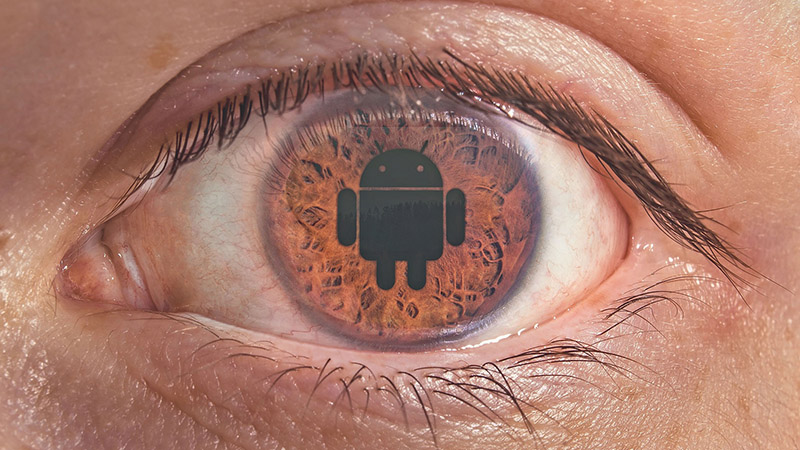Making a case for removable batteries
 During my time at SXSW, I had no better partner than my smartphone, a trusty LG G4. I described my smartphone as “my everything.” The reason being of course that I relied on it for note-taking, photos, social media, messaging, and, most importantly, navigation. As you can imagine, my consistent use of the device meant that I was a draining my battery immensely.
During my time at SXSW, I had no better partner than my smartphone, a trusty LG G4. I described my smartphone as “my everything.” The reason being of course that I relied on it for note-taking, photos, social media, messaging, and, most importantly, navigation. As you can imagine, my consistent use of the device meant that I was a draining my battery immensely.
In a way, I was sort of the outsider in the SXTXState group since I was literally the only member, across faculty and students, using an Android device instead of an iPhone. This largely stems from the fact that I see myself a computer hardware masochist. I push computer hardware, whether it’s my custom built desktop or my smartphone, to its limits and back just for the fun of it. When it comes to customizability and power use, Android is king in my eyes.
While the rest of my team tethered their iPhones to external batteries, I continually hot-swapped my phone’s internal batteries at my leisure. As my colleagues clung to life to keep their devices powered, I went from 0 to 100 percent power in mere seconds. Simply put, I don’t think I could have survived SXSW using an iPhone, or really any smartphone that has a non-removable battery.
Even if most users wouldn’t have extra batteries for their phones, this isn’t a feature that should go away. I find it almost inexcusable that most modern phones are designed with non-removable internal batteries. If I had to pick a single feature that LG got right with their G4 smartphone, it’s the removable battery. Go figure that they finally did away with this option on their recently launched G6, which means, in my eyes, my elderly G4 would have been a better partner and “my everything” at SXSW.
The key take away from 360-degree video on an Android phone
Being the android guy also gave me a unique opportunity that my iPhone comrades lacked. Robert Hernandez, an associate professor of professional practice at USC, let me borrow a 360-degree camera attachment that only works on android phones. The attachment was none other than the Insta360 Air.
To be honest, I was mostly expected to experiment with 360-degree video, as we had no idea I would be presented this opportunity. Even being a tech savvy young man, there was definitely a learning curve to using the device.
My key take away from using this tool was its affordability. For only $129.99 on Amazon, this camera can be had for all Android users. With all the focus on augmented reality and virtual reality, I could really see the application of 360-degree video. The goal isn’t just to take a fancy new type of video, the goal is to find a new way to share an experience or tell a story.
People value their privacy over legality
First and foremost, let’s get out of the way that I’m not a lawyer, and I’m not giving you legal advice here.
Got that? Good. Because laws can change, and I’m not pretending to be a legal expert.
During my time interviewing panelists and attendees, I noticed an interesting trend. Most of them had no objection to being photographed or recorded, as long as they were informed and gave consent to the camera operator. Obviously, I decided to make asking for permission to film a goal of mine, especially when gathering interviews from panelists.
One of my other experiments at SXSW was the use of POV video. In particular, I was very fond of my iVUE Horizon Pro 1080p video glasses. Because of their undercover nature, I didn’t necessarily always announce when I initiated filming, much to the chagrin of one panelist, who will remain nameless. In other cases, panelists like Robert Scoble found them to be quite amusing.
This led to me ask one question, “What is the legality of filming people at these types of events?”
The US laws regarding filming can seem murky, but one underlying factor has prevailed. When you leave a private area, such as your home, and enter a public space, you momentarily give up your right to privacy. Conferences, exhibitions, festivals, and well, pretty much any other event open to the public, are all considered public places. I technically did not have to ask for permission to film people at the SXSW Interactive Conference.
Naturally, the legal landscape here could easily change if I were profiting off of the photos and videos I took, as that becomes commercial use and requires a model release form. It’s important to note that I took every photo and video under the premise that I’m a journalist, tech blogger and documentarian reporting on an event.
It’s also important to point out that SXSW also has their own policy regarding photography at events. Basically, it’s okay to do as long as you aren’t disruptive.
If you were wanting to meet celebrities, this is the place to do it
 So this should come at no surprise. When you gather tens of thousands of people together at a conference, some bigwigs are bound to show up.
So this should come at no surprise. When you gather tens of thousands of people together at a conference, some bigwigs are bound to show up.
When it comes to meeting these people, the best tip I received was to keep my eye on badges and faces. You have to train your eyes to scan the names and types of badges of people who pass you. You never really know when one of your internet heroes is walking right passed you.
Speaking of internet heroes, I was fortunate enough to meet Vint Cerf, one the internet’s founding fathers. This was absolutely a humbling experience, since he told us about his digital roots as a graduate student, just like me.
My friends and colleagues also ran into their own celebrities. While I generally avoid celebrity worship, if you were wanting to meet celebrities, this is the place to do it.

